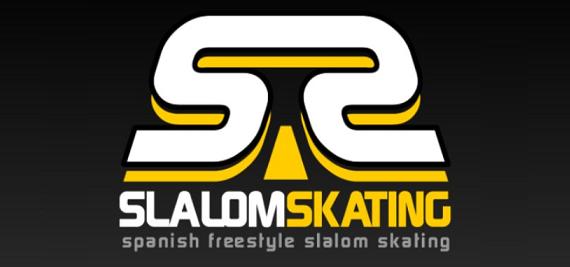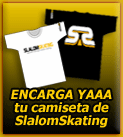-
Trick
-
Period
-
Trick switch
A trick realized with the opposite side of the body.
Example 1: the cross with the left leg, (that crosses in front of the right leg), is the trick switch of the cross with the right leg, (that crosses in front of the left).
Example 2: the one leg carried out with the left is the trick switch of the one leg carried out with the right.
-
Simmetry
A slalom trick is symmetrical when your trick switch is the same trick.
Example 1: the double eagle is NOT a symmetrical trick.
Example 2: the eagle walk IS a symmetrical trick.
-
Freestyle skate
A freestyle skate requires a short frame, (less than 250mm), and a rigid boot that usually is of carbon, plastic or fiberglass. Freestyle skates can incorporate a liner between the boot and the foot. The majority of skates have support with a cuff that helps the fastening of the ankle.
-
Frame
This is the part of the skate in which the wheels are screwed. It can be of composite or of aluminum. Depending on the use and the size of the skate, the length of the frame will vary and will have 4 or 5 wheels (as in the case of speed skates.)
For freestyle the ideal is that the frame be made of aluminum and fits 4 wheels that don’t stick out too much from the boot.
In stores one can find frames between 219mm and 245mm. (The length measures between the first and the last axles of the wheels). Also, frames with rockering of the axles are used.
-
Wheels
The wheels used for freestyle slalom usually are of durometer, (hardness), between 83A and 85A. Depending on the length of the frame, one will be able to put various wheel sizes. For frames of 245mm or 243mm, 80mm (maximum) diameter wheels are used. The 231mm and 219mm frames allow a maximum of 76mm and 72mm diameters respectively.
-
Rockering
Wheel/frame configuration such that only the 2 center wheels of the inline skate touch the ground. This can be configured utilizing smaller outside wheels than the center wheels or utilizing a frame that has the outside axles elevated higher than the center axles.
This configuration helps rotation a lot, despite the loss of a little stability.
-
Flat
Wheel/frame setup with which the 4 wheels touch the ground at the same time.
-
Cones
The slalom cones are normally of plastic or rubber and have a base of some 7.5cm in diameter.
Series of movements that a skater executes in between cones.
Number of cones necessary to execute a trick after which one returns to the beginning of the trick sequence.











